Unique Team Traits: The Red Wings use a dangerous part of the ice to avoid getting hemmed in
theScore’s multi-part team previews includes a look at something that separates each team from the pack. From specific breakouts to powerplay formations and beyond, Justin Bourne and Thomas Drance hope to highlight something you haven’t noticed in the past.
What we noticed
Detroit uses the front of their own net as a relief valve when they’re pressured on breakouts
The Red Wings, unlike so many other teams, have been blatantly disregarding traditional thinking that forbids D-men from passing the puck in front of their own net.
It makes sense for kids playing minor hockey. You don’t want them handling the puck too often in the danger zone.
It makes sense in junior hockey. Some kids learn hard lessons while trying to get cute and end up digging pucks out of mesh.
But in the NHL? The players are more than good enough to utilize an open area of the ice with good puck movement. Unfortunately after enduring years of on-bench floggings coming up through the ranks, most don’t even consider keying the breakout with a pass through the slot.
In a standard forecheck, most teams bring a winger from the middle of the ice who angles the d-man up the wall - where he’s almost always been instructed to go anyway - into F2, where they hope things start to go awry.
F3 is usually so high in the middle (or wide, depending) that it leaves a soft spot that Mike Babcock has permitted his team to exploit in an effort to get out of the zone without banging the puck into shinpads along the walls.
For Detroit, the rewards have been worth the risk.
Coach’s commentary

I chatted with Mike Babcock about the concept, where he confirmed Detroit considers using their net front in the D-zone a solid option.
Yeah, for sure, when you think of forechecking in today’s game in the National Hockey League, or any other league, you’re looking to take away the walls. They’re coming hard with one, they’re taking the wall with two, and probably the other side with three, there’s a space that you can execute in front of your net. Obviously the problem is when you turn the puck over in front of your net sometimes it ends up in your net. But I’m a big believer in getting back and executing fast so you don’t have to play in D-zone coverage at all. You turn pucks over by keeping it along the wall and you end up in the D-zone, and we’d like to be in the offensive zone by making that good first pass.
Babcock acknowledges that it’s not necessarily option 1A for his club - you always take what’s given to you, and you’d choose the boards over the middle every time - but if the walls are closed off, they trust their players to put the puck somewhere risky to advance zones.
The breakdown
A few examples of how they relieve pressure by using the middle:
First, Detroit wins the faceoff back to their corner, where two Bruins sit close to the near wall.
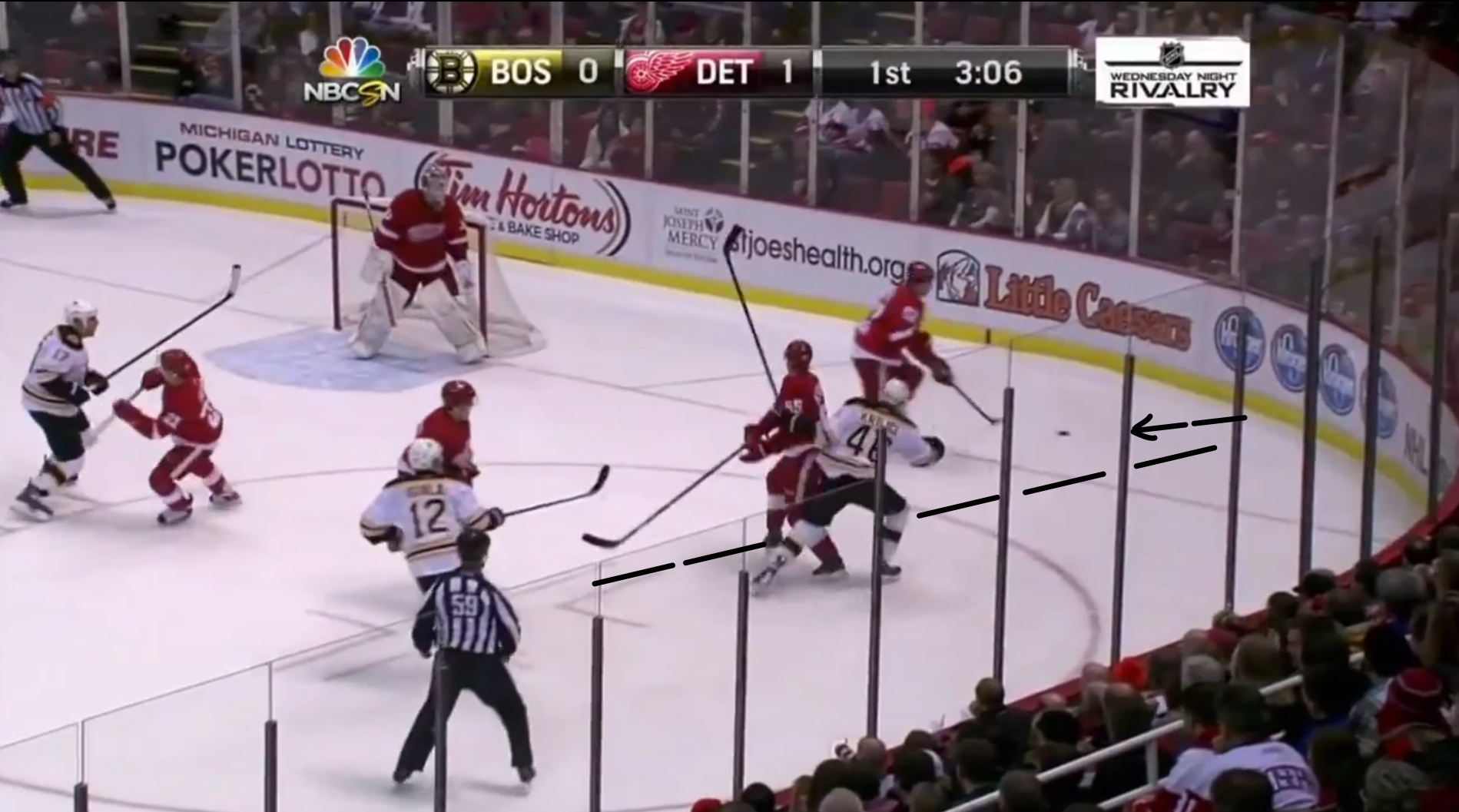
As the puck gets moved up to the wing, Boston gets into its forecheck.
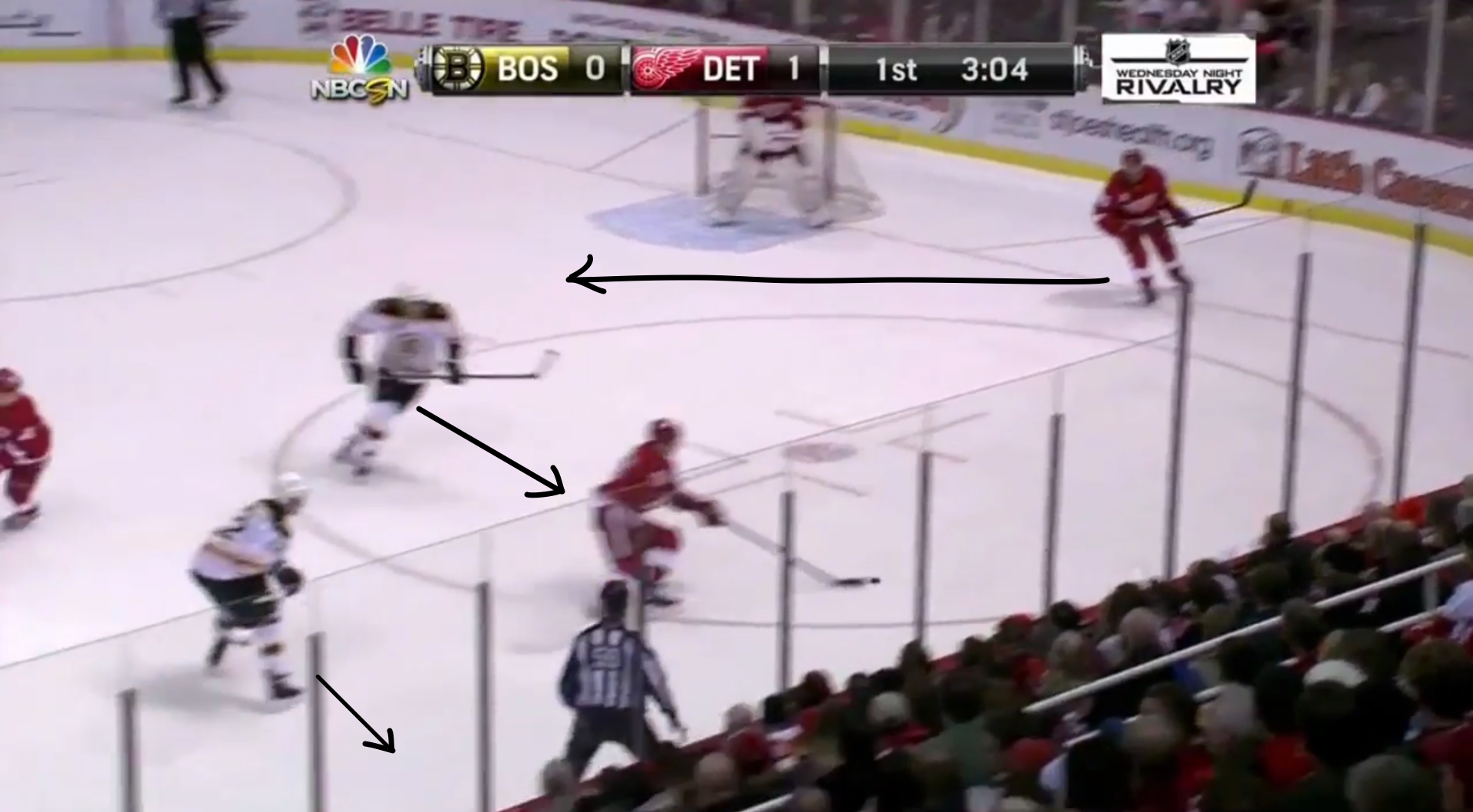
It's a little discombobulated off the draw, the general forecheck idea is there - they’re looking to close the guy off at the wall. The soon-to-be puck carrier (Joakim Andersson) is going to be receiving pressure, and Jarome Iginla (the high Bruin) is reading, trying to take away the boards.
So, what’s open? That D-man in front.
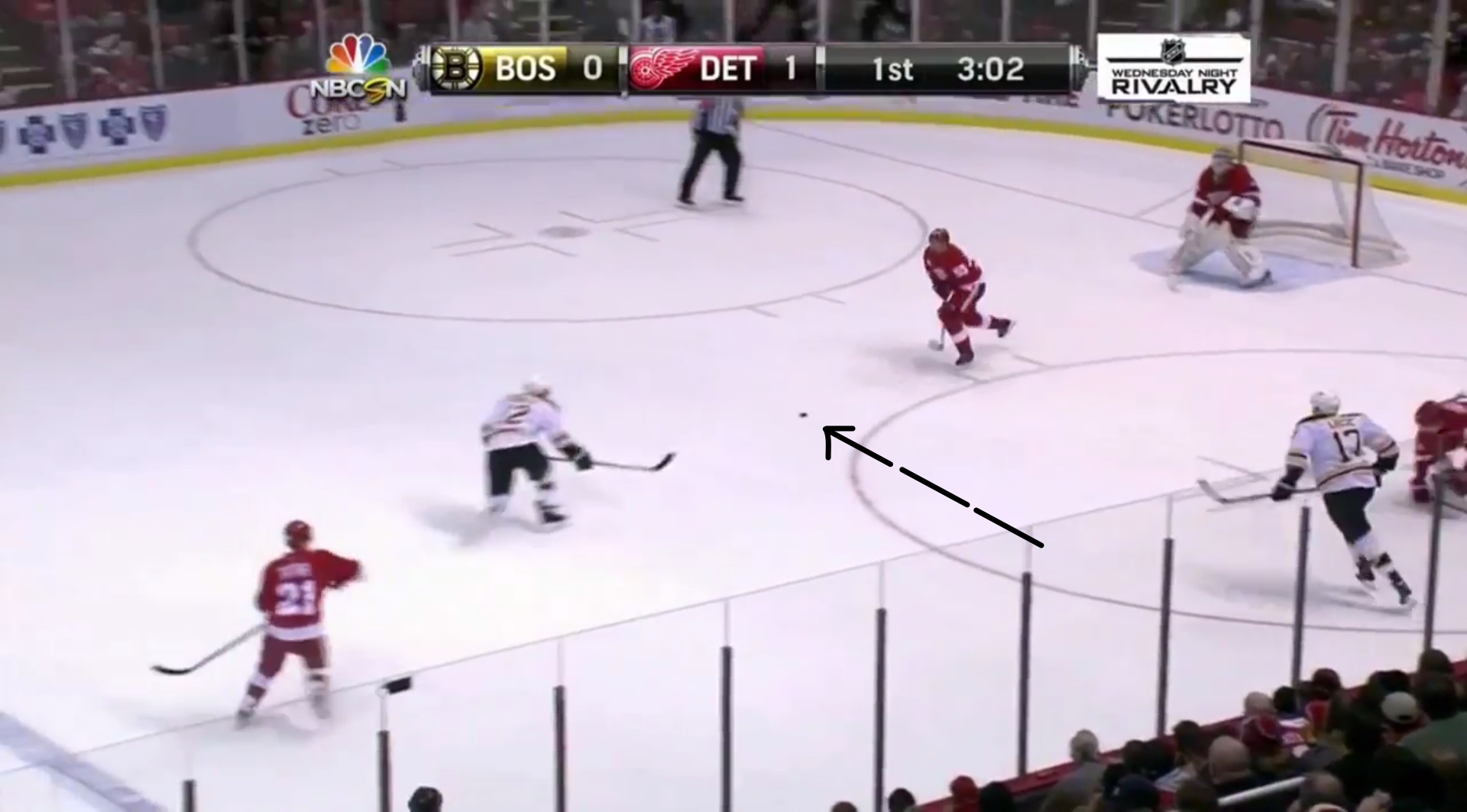
It’s a bit of a clumsy play, but the puck gets to the middle, which allows Detroit’s defender to take a stride, and move the puck to the other side, relieving the pressure from Boston’s overload.
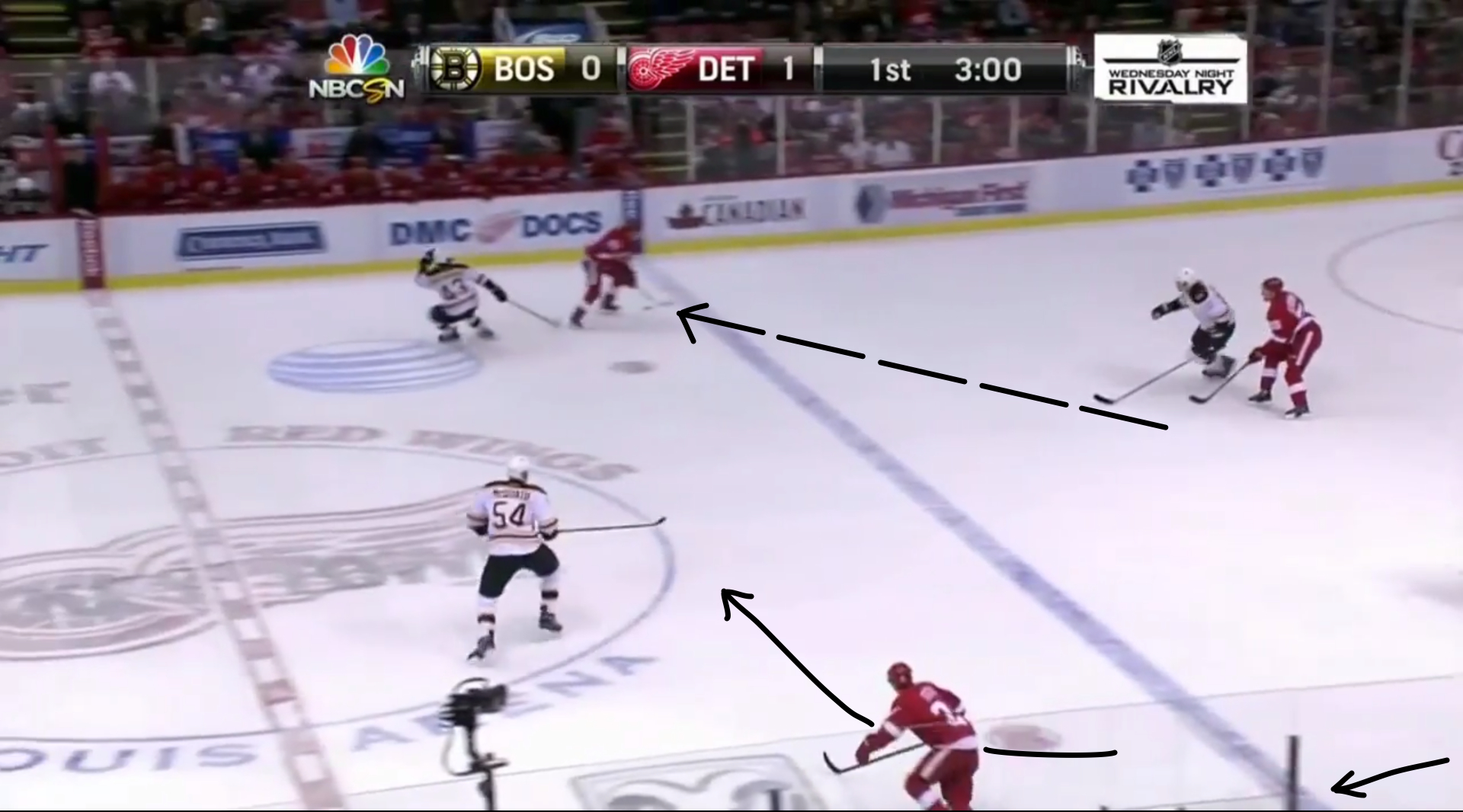
And it’s not just defenseman who look to get passes in their own slot - the forwards provide options there too. Here’s Jakub Kindl heading back on a puck.
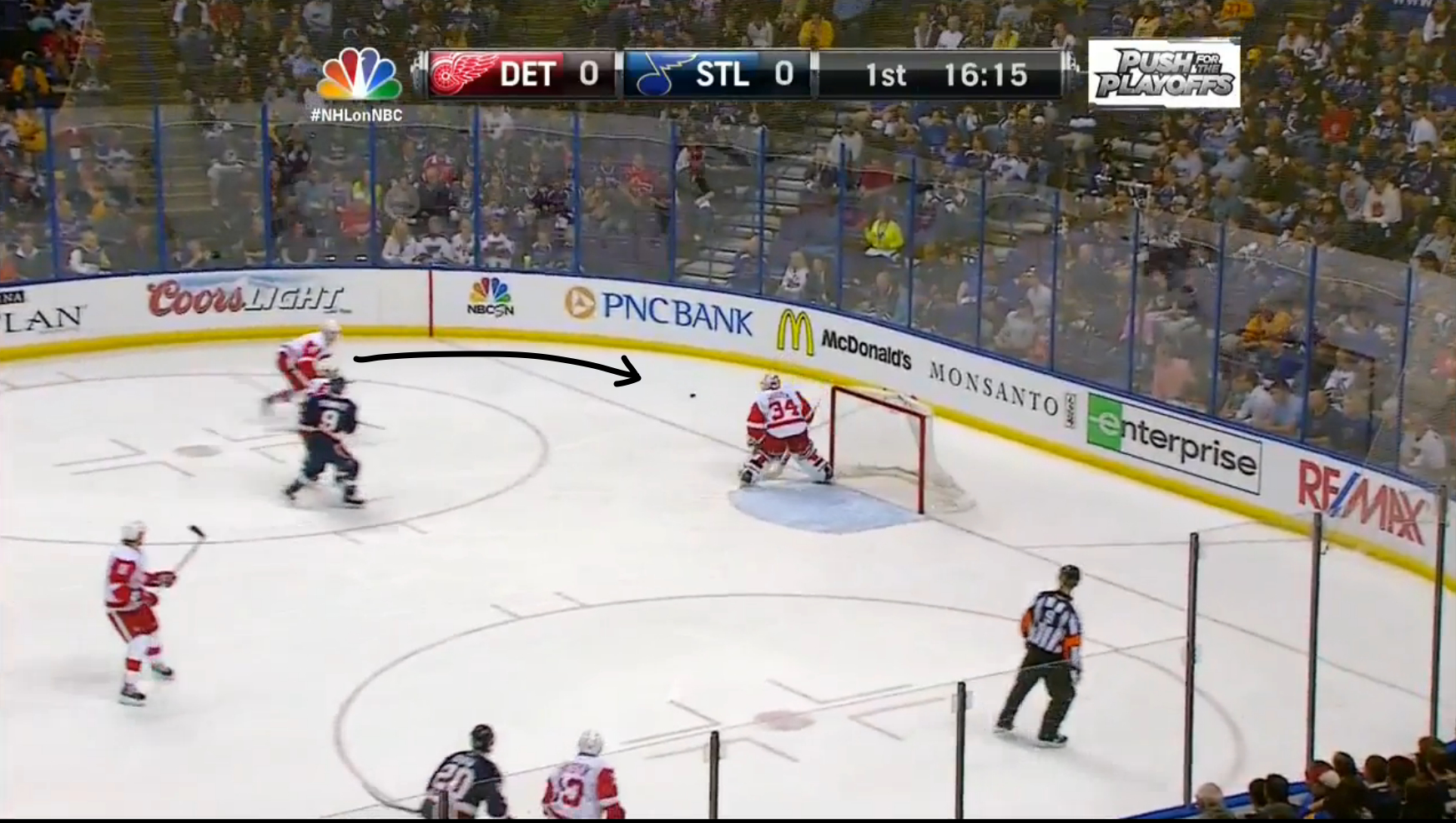
His partner buys him some time, and he has a look around.
What would a rim do for the Wings in the above frame? Well, nothing but jam the puck into Alex Steen, who’s on the far wall and likely expecting the guy he’s with to stay there too.
Only, he doesn’t. Pavel Datsyuk heads to the front of the net.
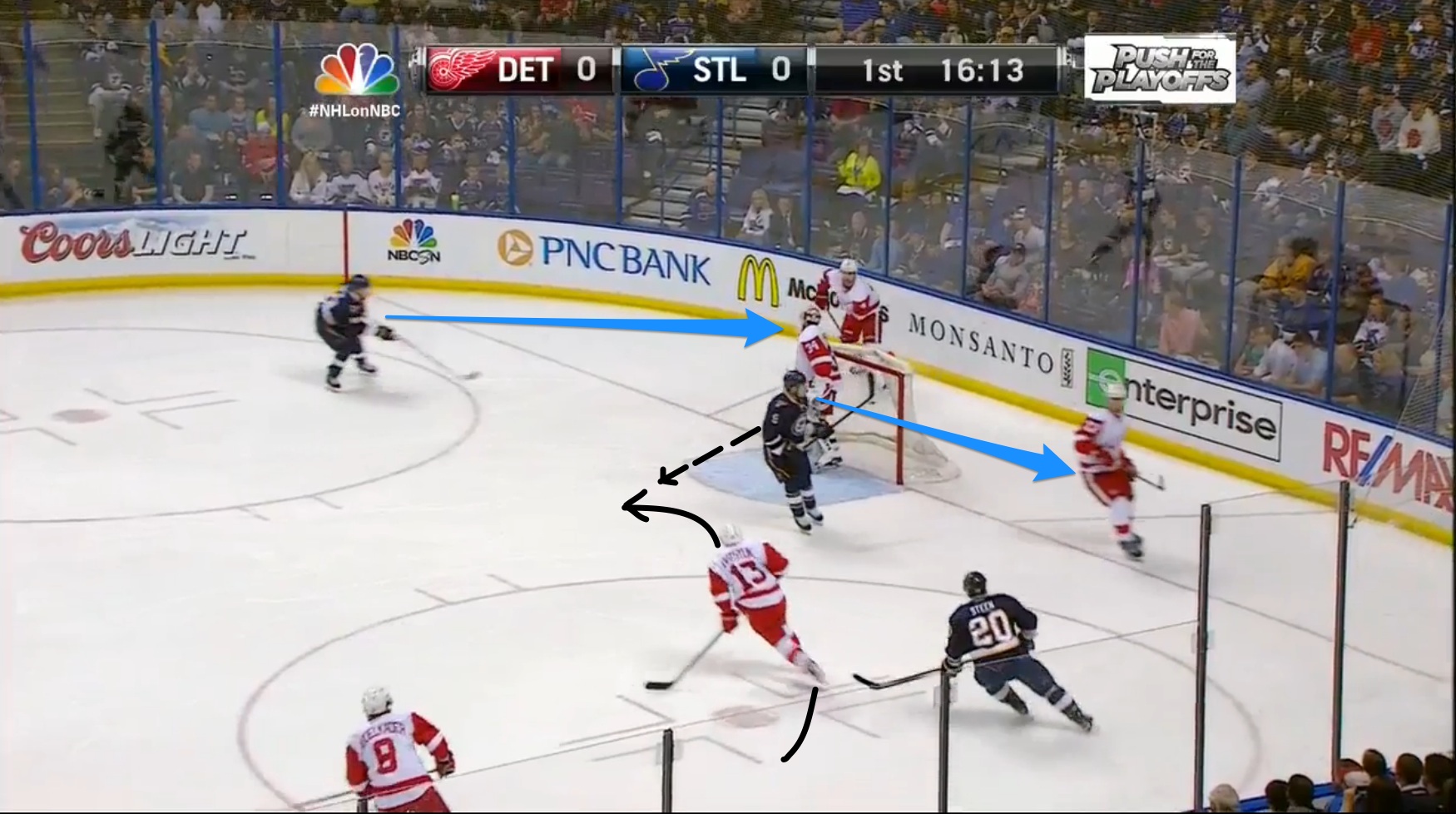
And right there in the scary part of the zone, the Red Wings look to start their breakout with three Blues forecheckers all caught deep.
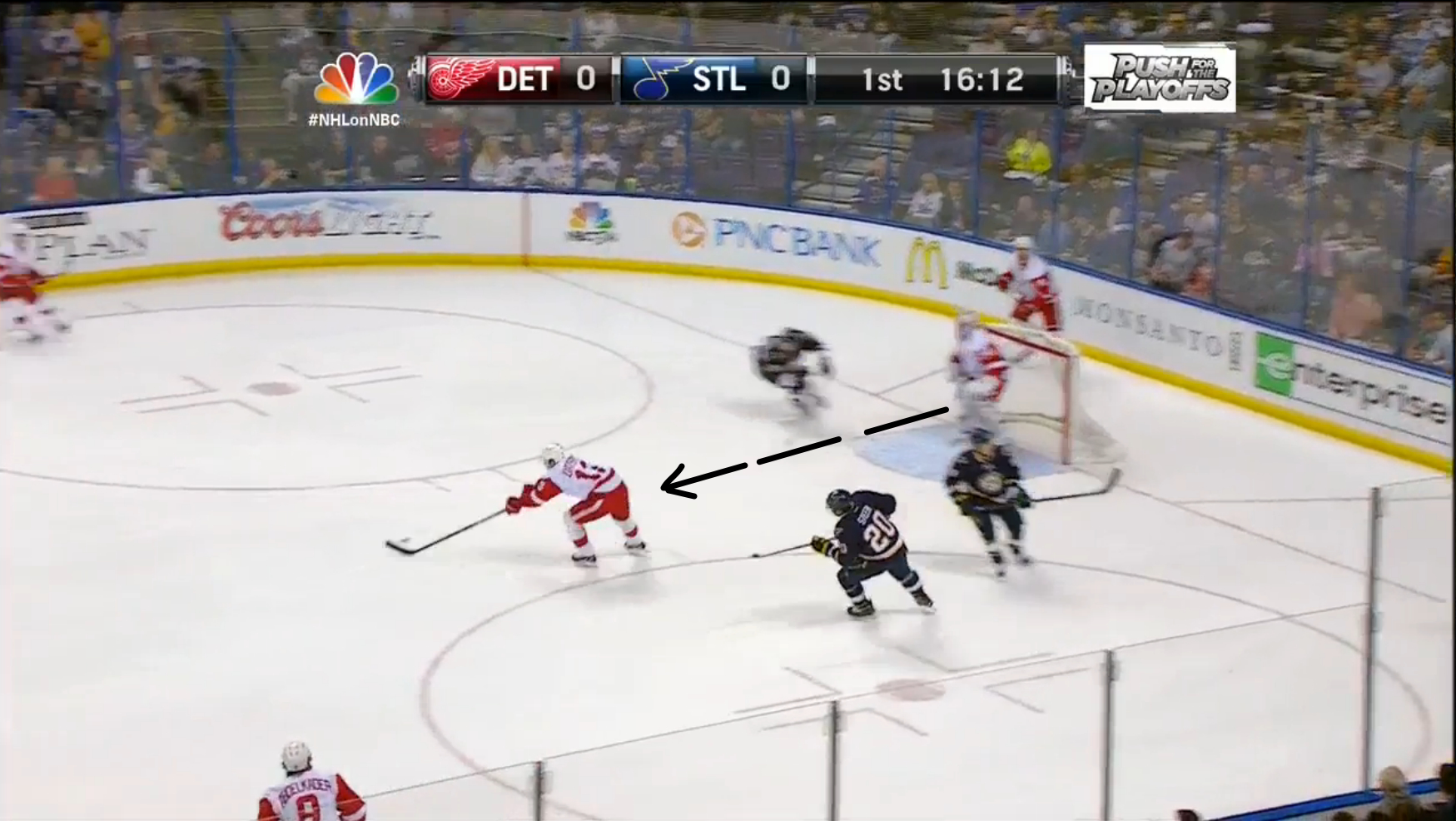
Hell, in that same game the Wings had their goalie moving the puck there.
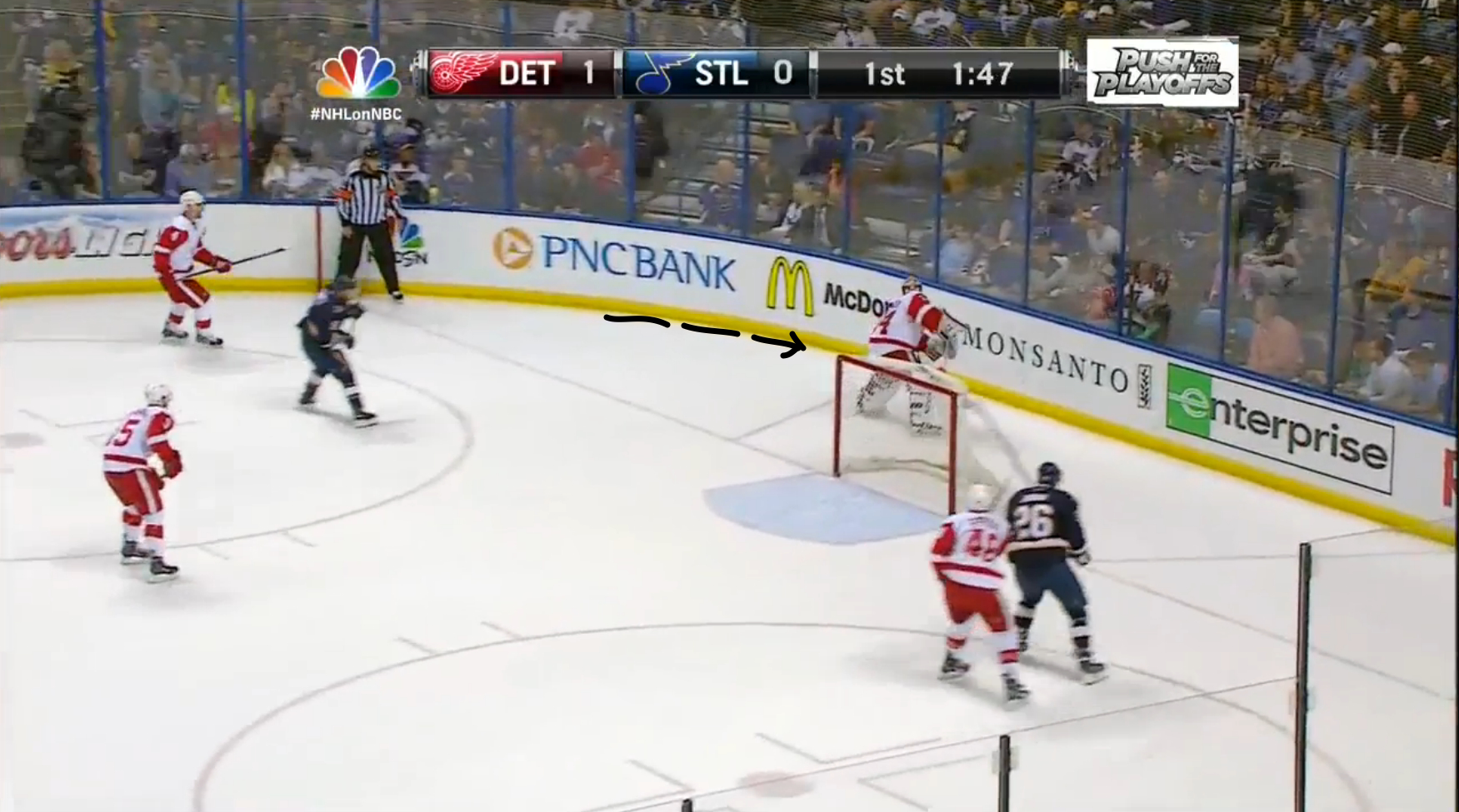
The walls get cut off...
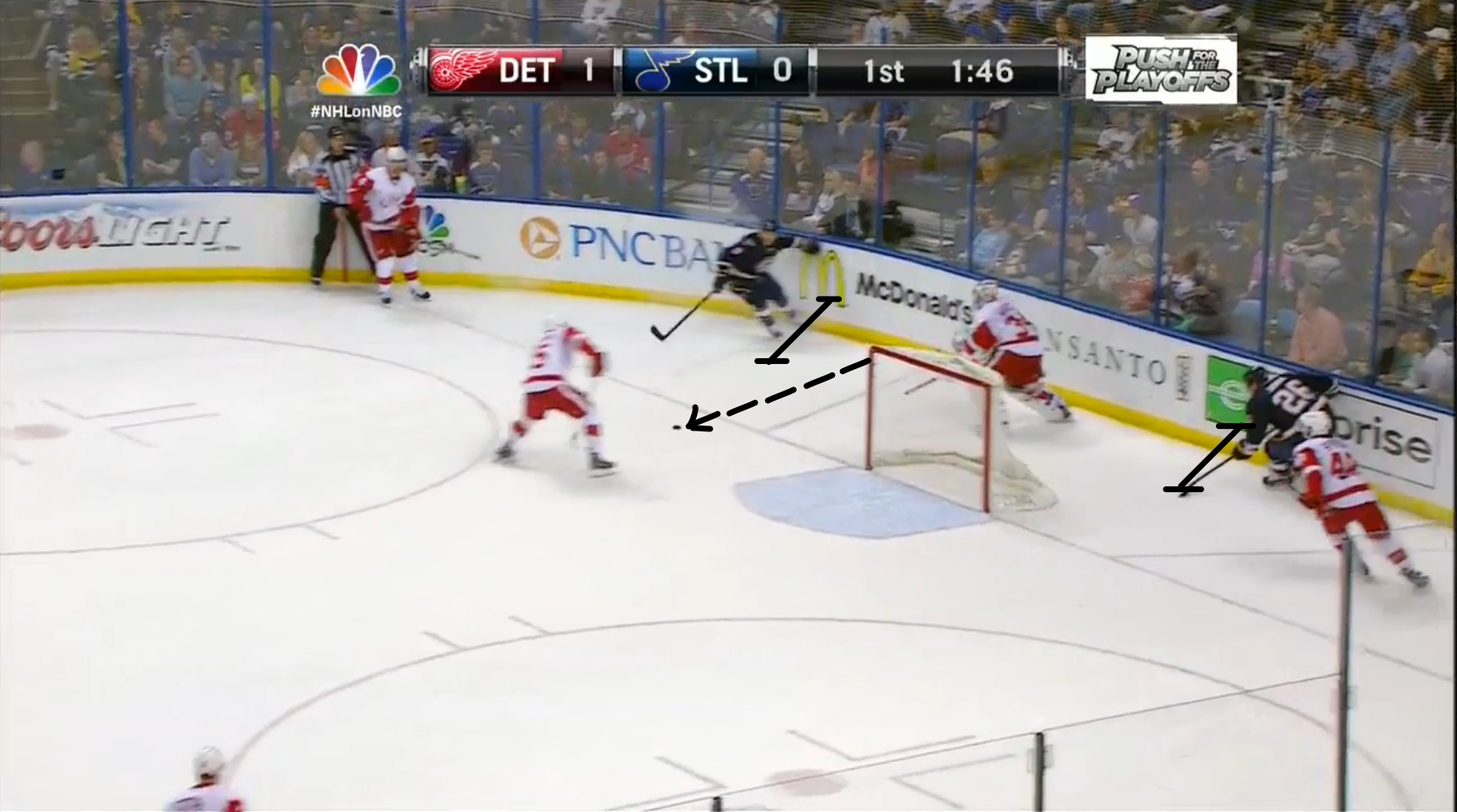
...And two Blues are trapped.
That particular play is a little more ill-advised, but the point remains the same - when the walls get shut down, the Wings aren’t content to just smash it into shinpads, they’re looking to make tape-to-tape plays to get them out of their D-zone as quickly as possible, and into the offensive end.
Tap here to read about 5 Red Wings players you'll want to target in fantasy hockey!
Tap here for an extended look at 3 Red Wings storylines worth following this upcoming season.
Tap here to read an extended roundup of the Red Wings' not-so-busy offseason.